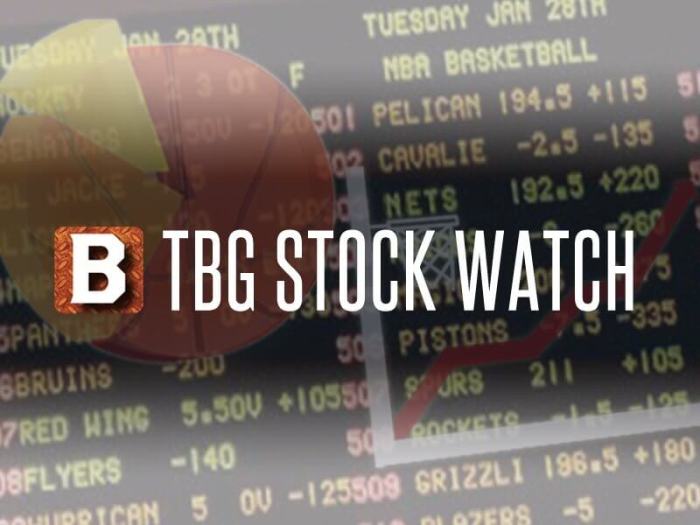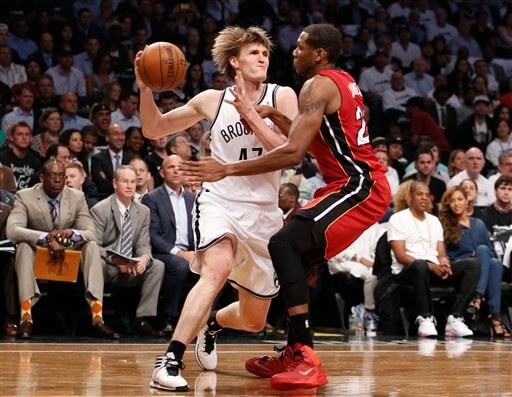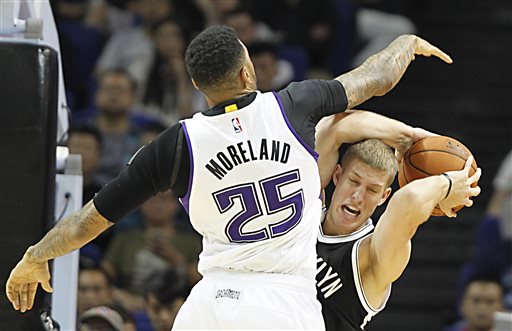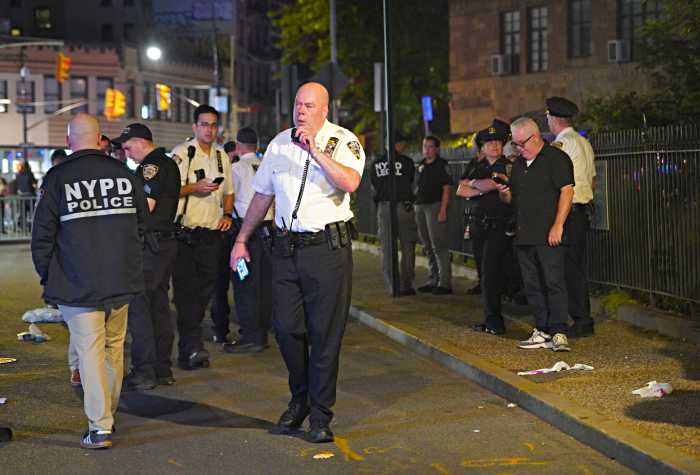With the obvious caveat that comes with nearly any analytical post after the first three games of the season – it’s still early – when looking at some of Avery Johnson’s rotations, one combination that appears to be yielding early positive returns is when Jordan Farmar and Devin Harris are on the court simultaneously, with Farmar handling the PG duties, and Harris focusing on his offense.
In the Nets two wins, a rotation that featured both Farmar and Harris was used during fourth quarter crunch time, and in both cases the Nets made a late surge to win, with both players hitting critical shots and free throws down the stretch. The tandem was used more frequently on Friday night against the Sacramento Kings – when Farmar and Harris played together in 9 different rotations, putting up a +/- of +15 when they were paired (and they only yield one negative stretch together, a 15-second clip in the fourth quarter when they put up a +/- of -1). The pairing was used a little less on opening night, five times, and only yielded a significant positive result once – but boy, was it a positive result, a +11 in a three-minute stretch of last week’s comeback win against the Pistons. For the sake of argument, I’m throwing out Sunday’s game against Miami, since no floor combination yielded many positive results.
When Farmar first signed with the Nets during the summer, I think many Nets fans were expecting to see him on the floor with Devin Harris, who unfairly or not, has been labeled a “shoot first” point guard (though nobody seems to mind when he’s hitting his shots, ergo, all of the Harris hand-wringing last season). Farmar even spoke publicly about the two PGs being used at the same time, and it certainly sounded like a good idea to get a true point on the floor with Harris, especially in crunch time situations where Harris is infinitely more valuable as a scorer as compared to a distributor.
However, what intrigues me most about the dual-PG concept is the fact that it really does give the Nets a different look down the stretch compared to last season. Because of injuries and some coaching decisions I’m going to label going forward known as Kikis, the Nets rarely featured a two PG lineup during the 2009-10 season. In fact, according to 82games.com, a Harris/second PG combo did not register in the top 20 of the team’s rotations based on floor-time last season. So, for the sake of argument, it’s been a least an entire season since the Nets used a Harris/second PG combination to any kind of effect, good or bad.
What’s most surprising about this development was how dynamic a Harris/second PG set worked the season before, 2008-09. Then, Harris was typically paired with Keyon Dooling for dual-PG sets and it yielded very positive results. The most frequently used dual-PG combination featured Dooling-Harris-Carter-Hayes-Lopez for 78 minutes in 08-09, putting up a +23. The 54 minutes of Harris-Dooling-Carter-Simmons-Lopez yielded a +11. In fact, only one Harris/Dooling combination put up a negative +/- in 08-09, the Harris-Dooling-Hayes-Najera-Boone grouping which mercifully only yielded a -5 during their 37 minutes together.
So one could hope that the early use of Harris and Farmar together is both the start of something new for the “All New” Nets, while simultaneously, a shot back to a slightly more successful era of Nets basketball. If the first week of the season is any indicator, Harris and Farmar need to be on the floor together when the team is hurting on offense, until numbers start to reverse themselves.

















